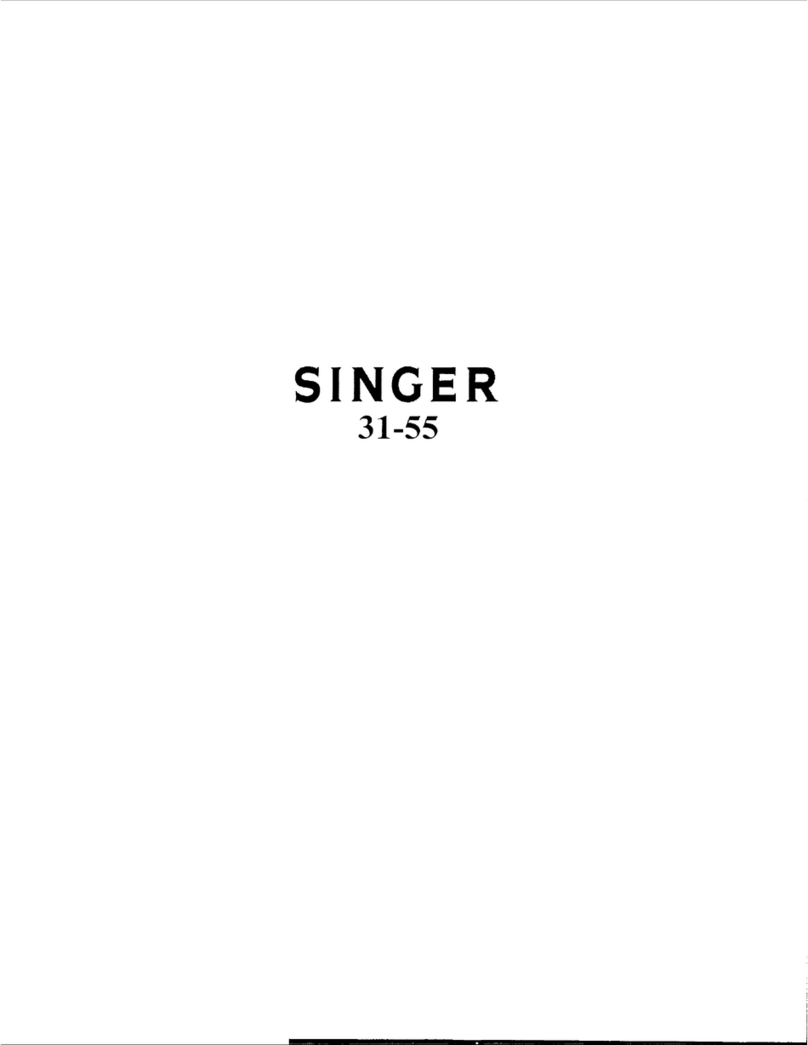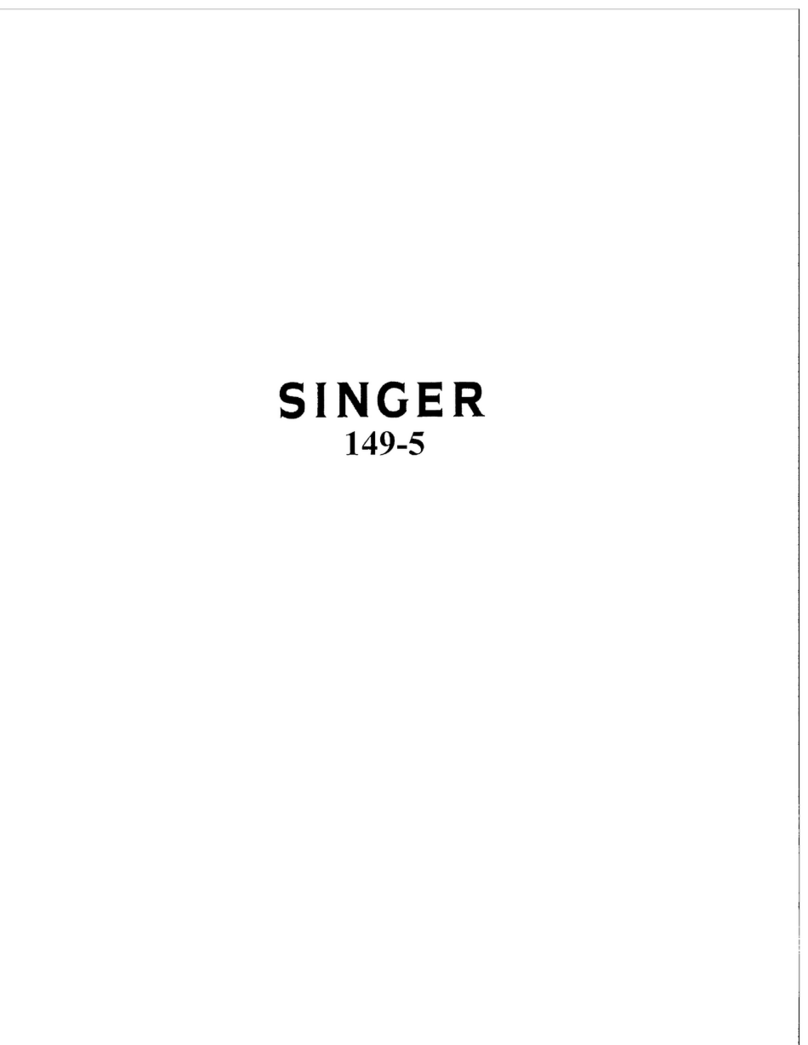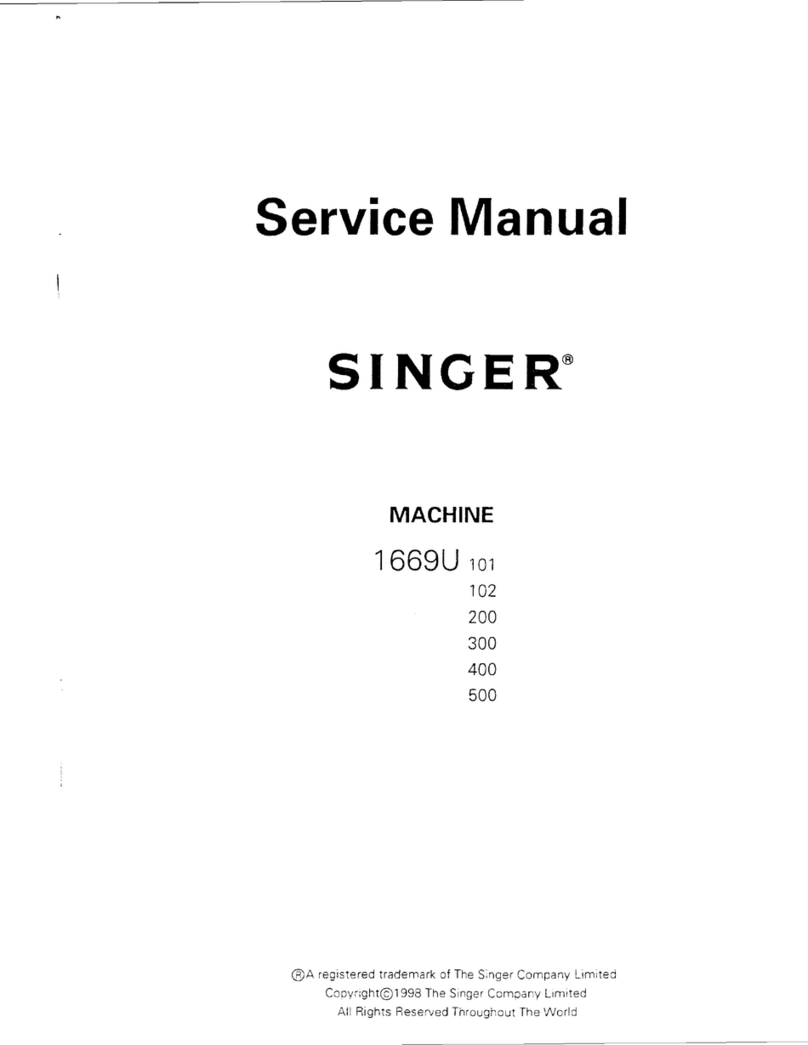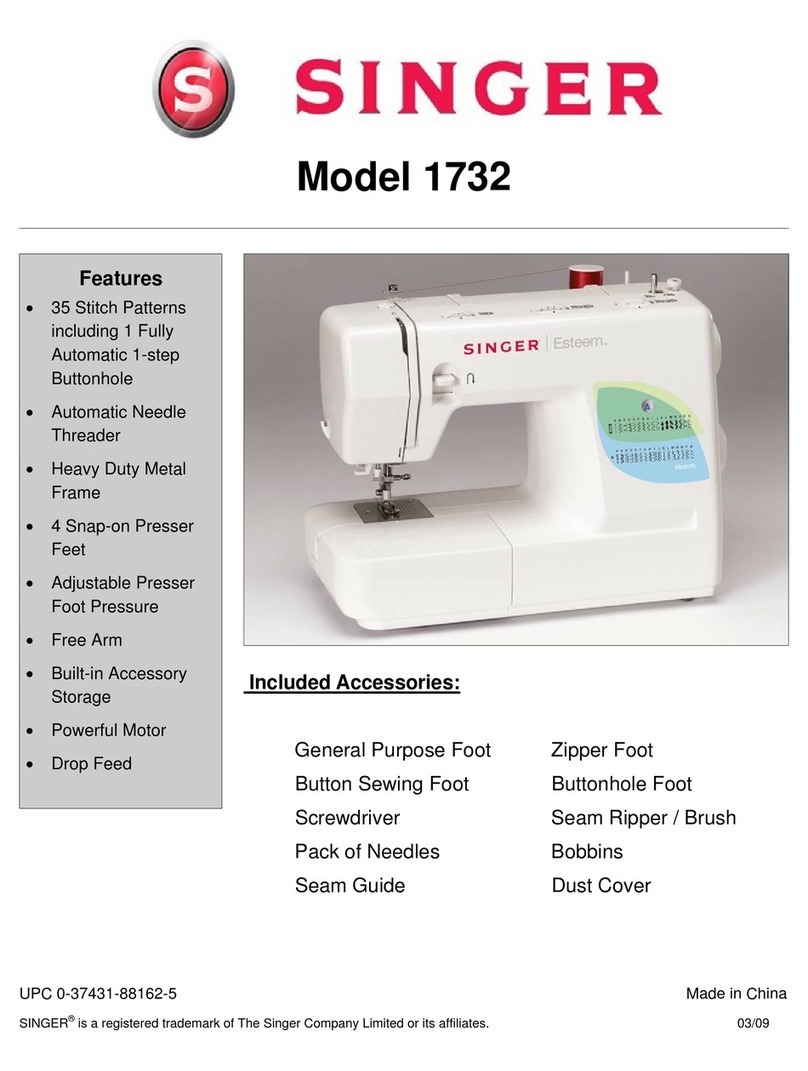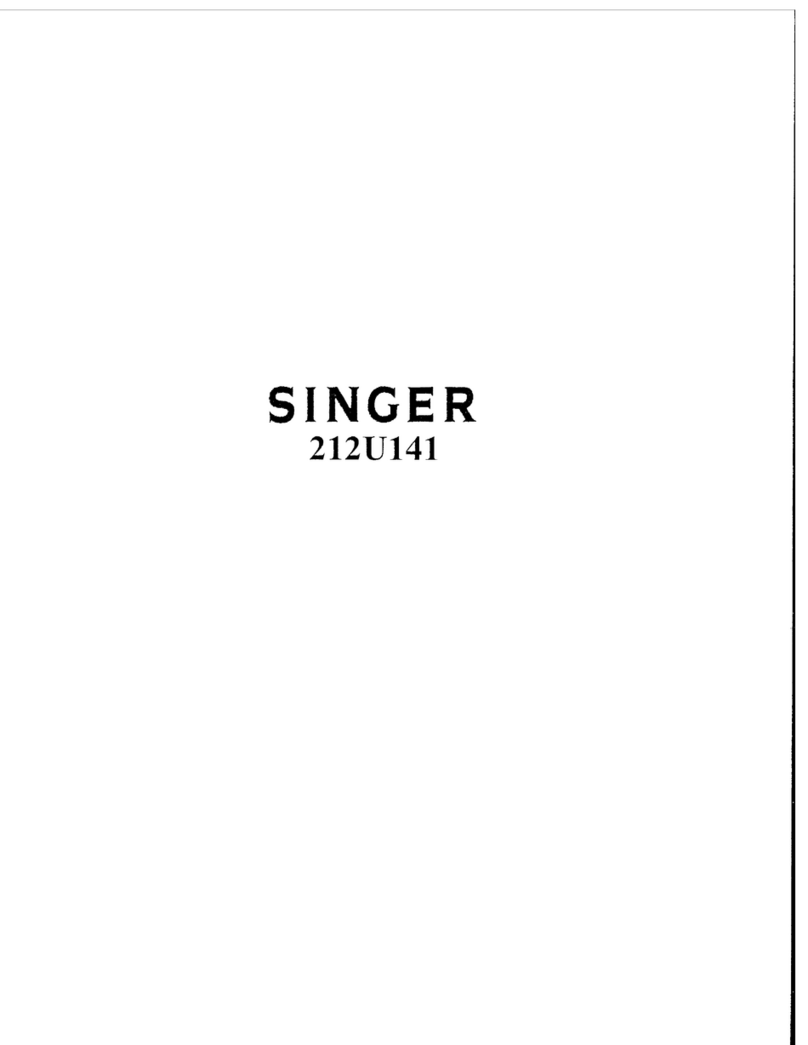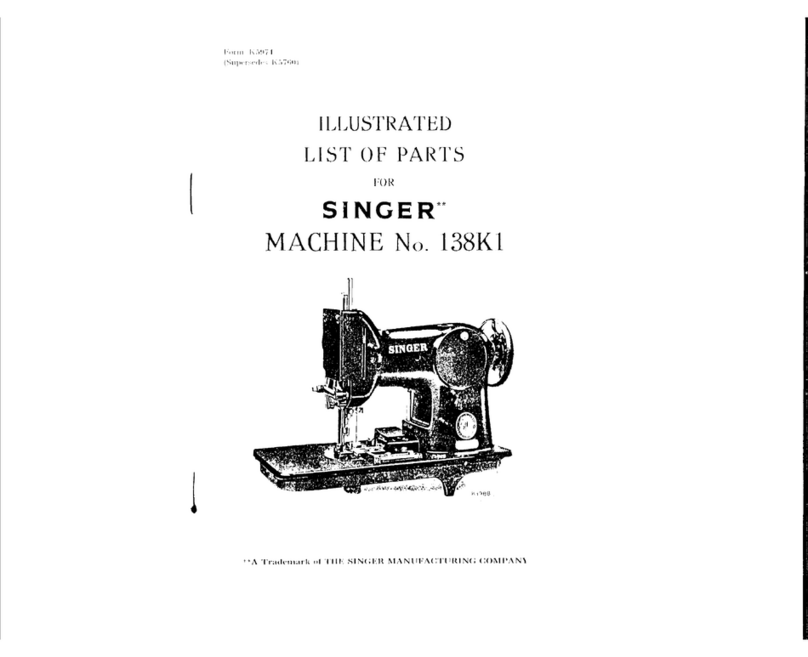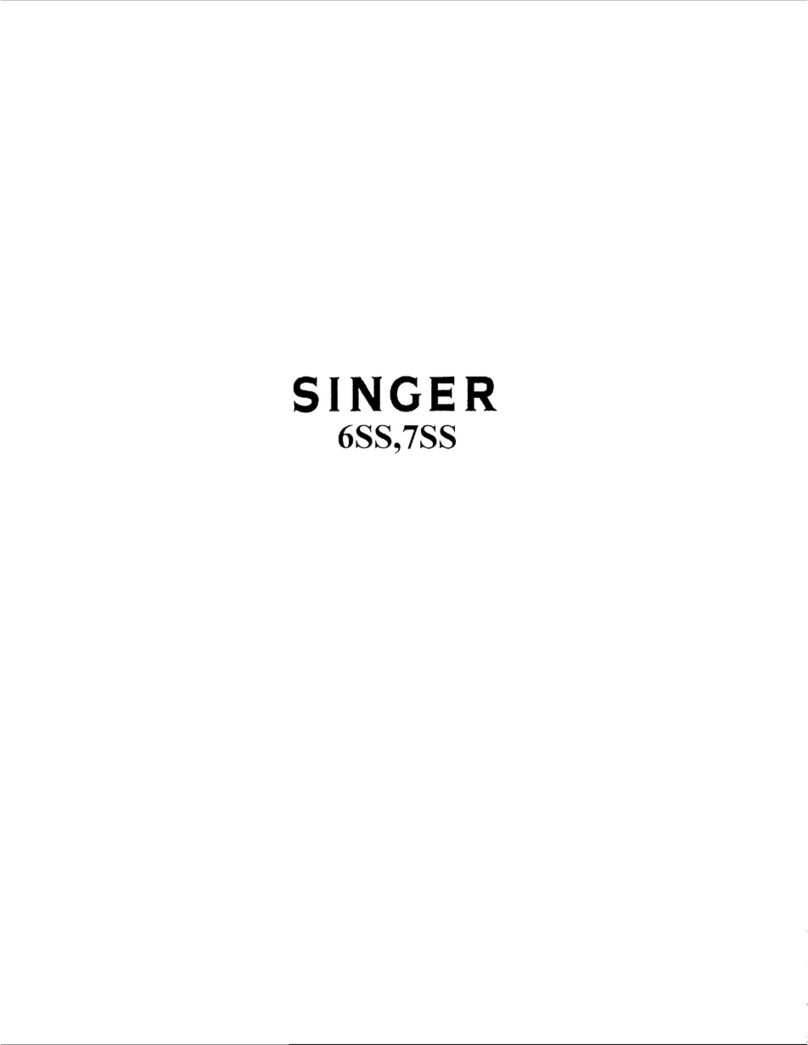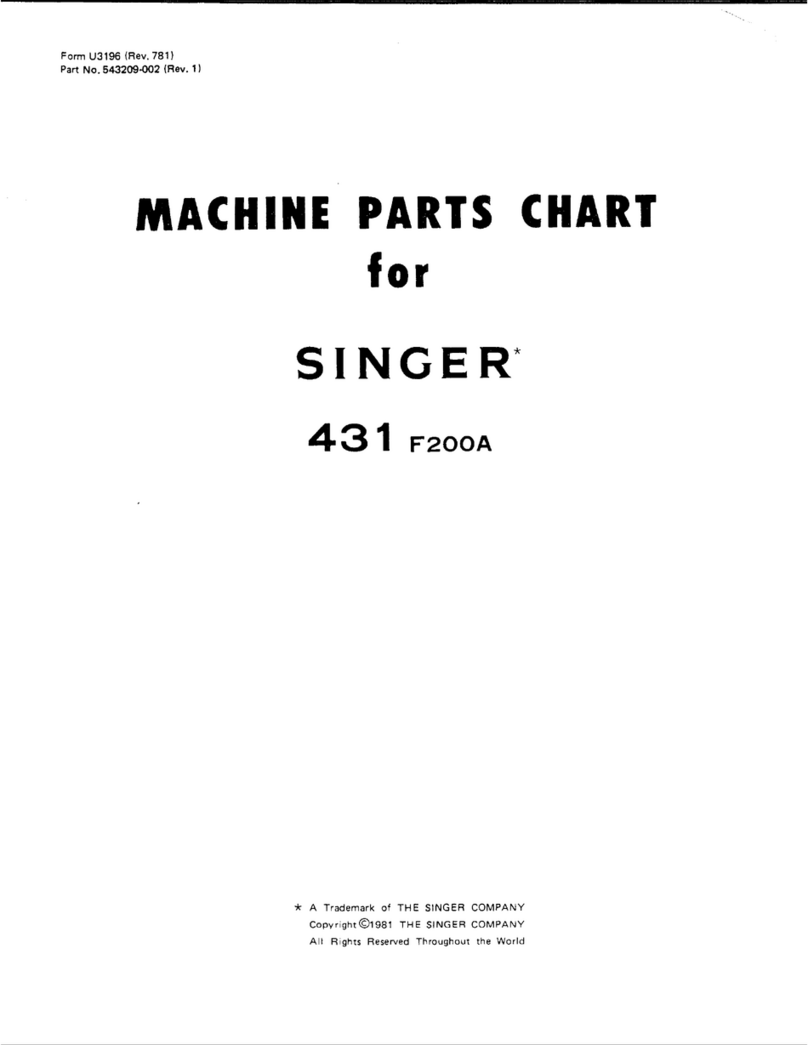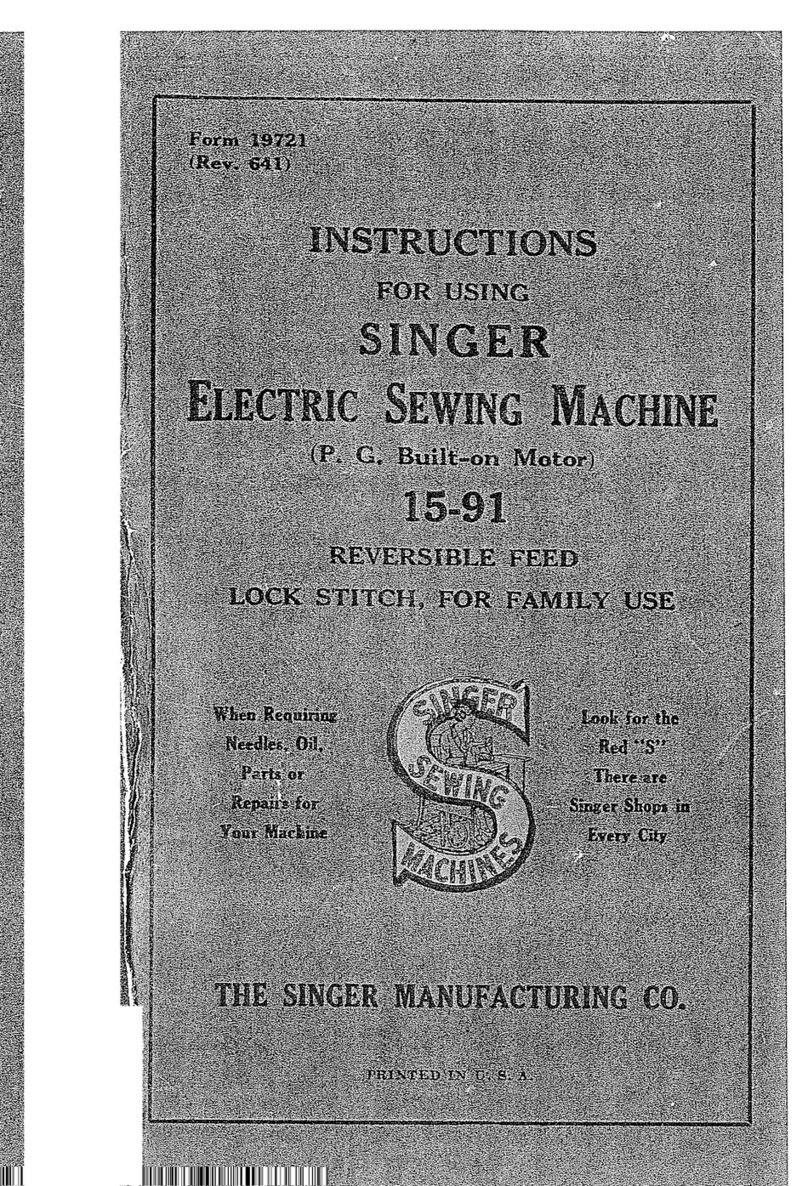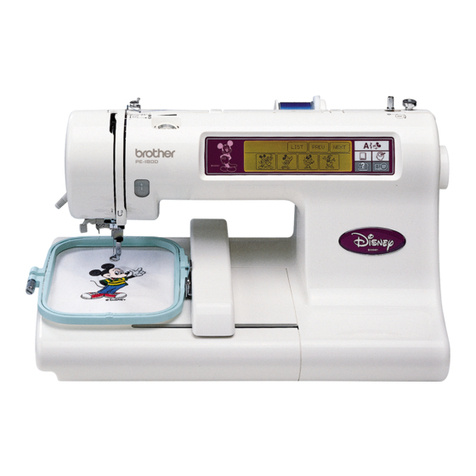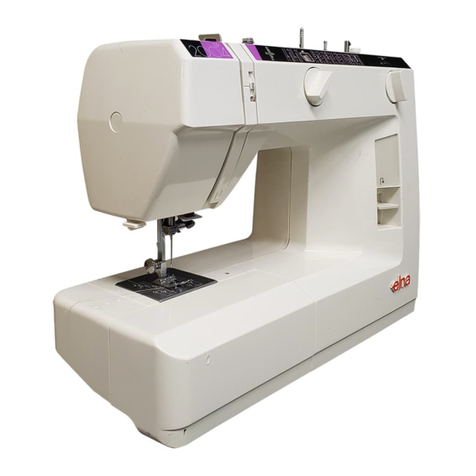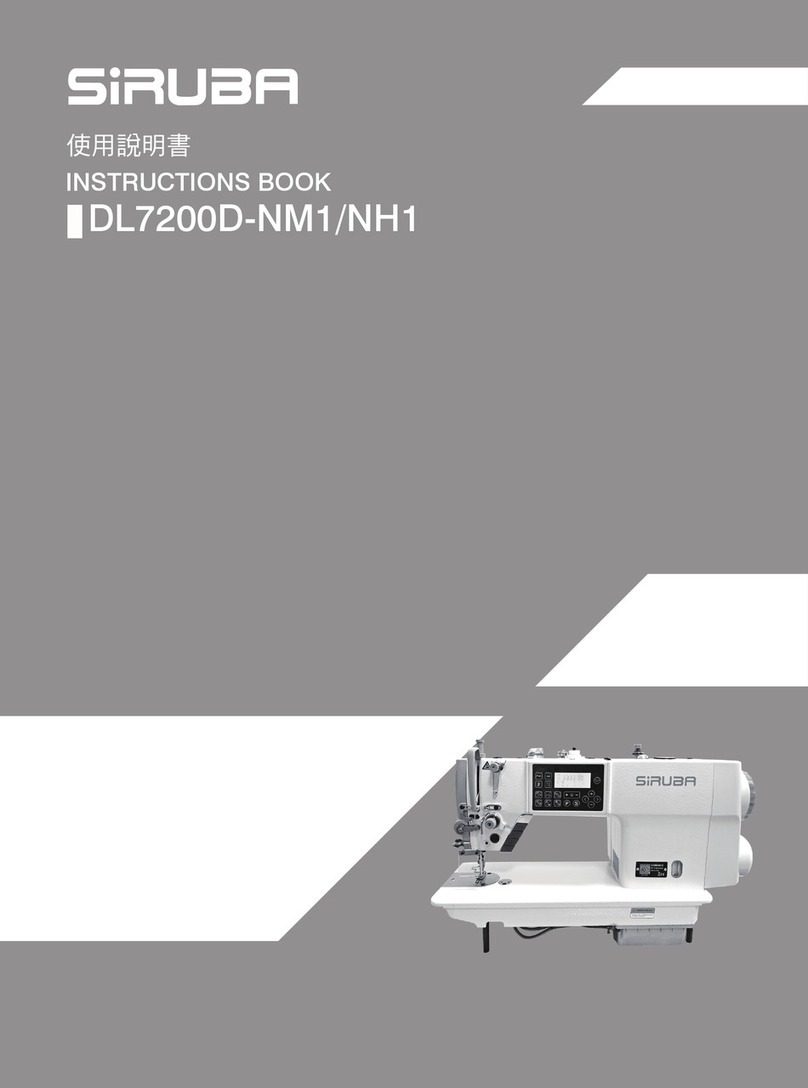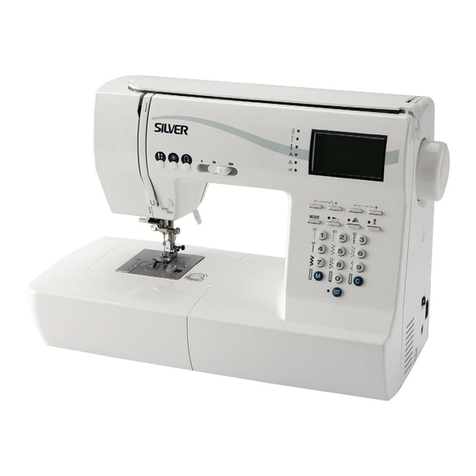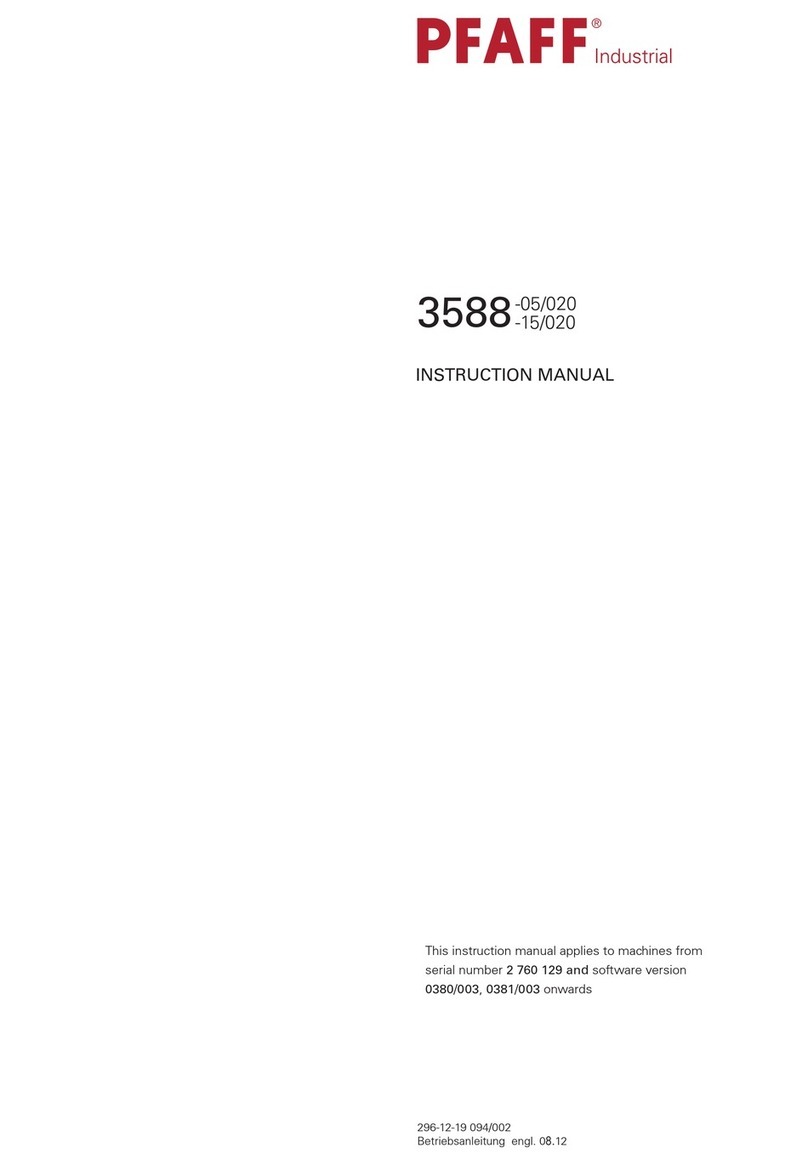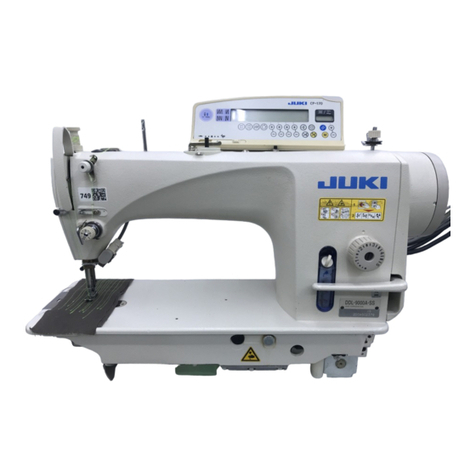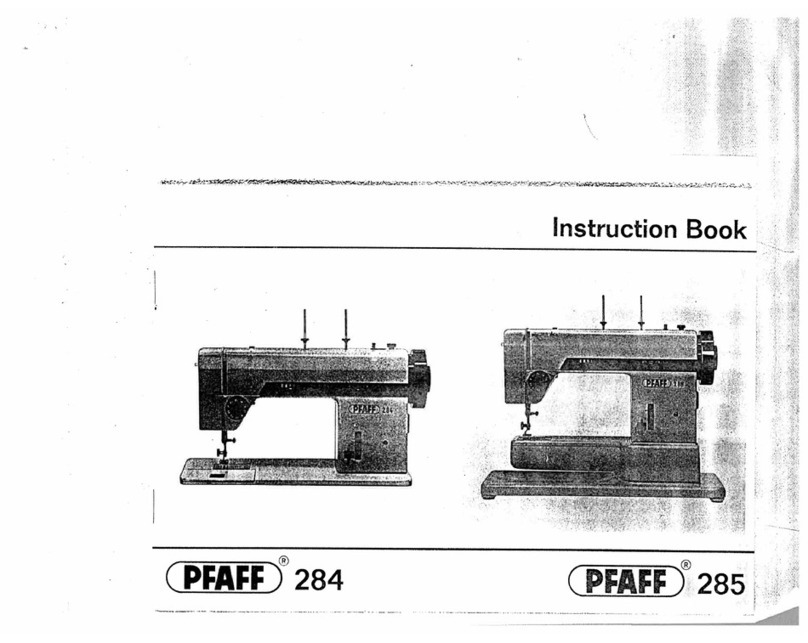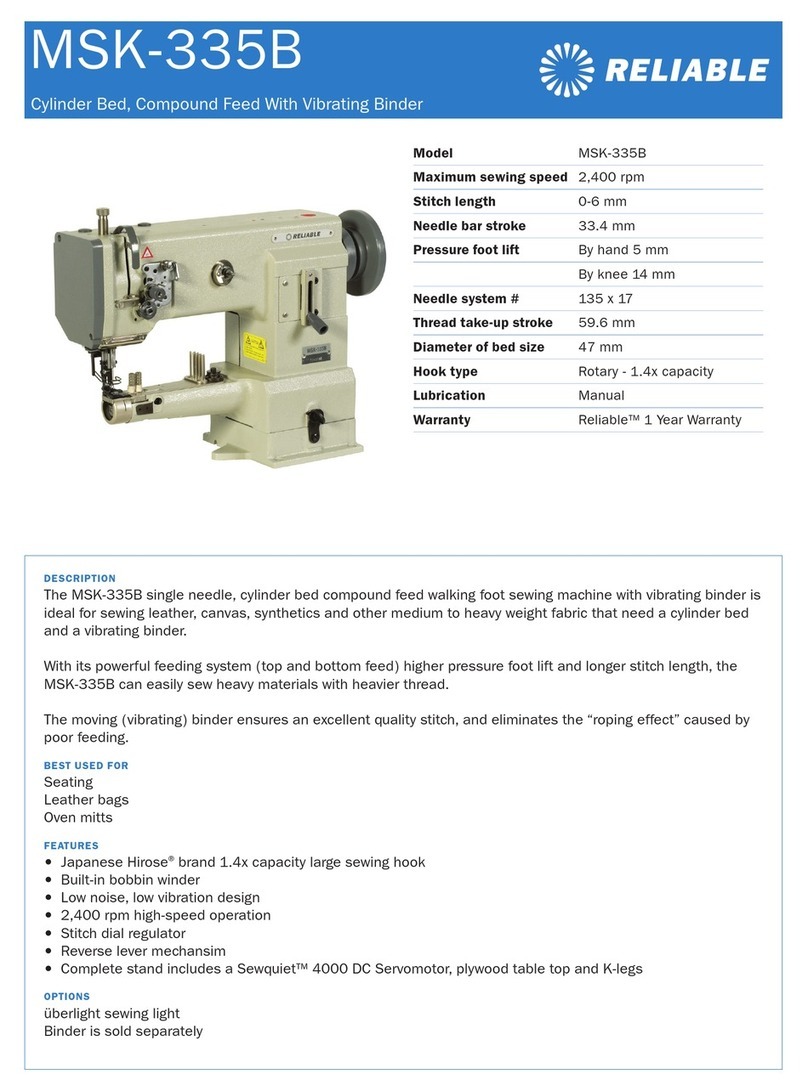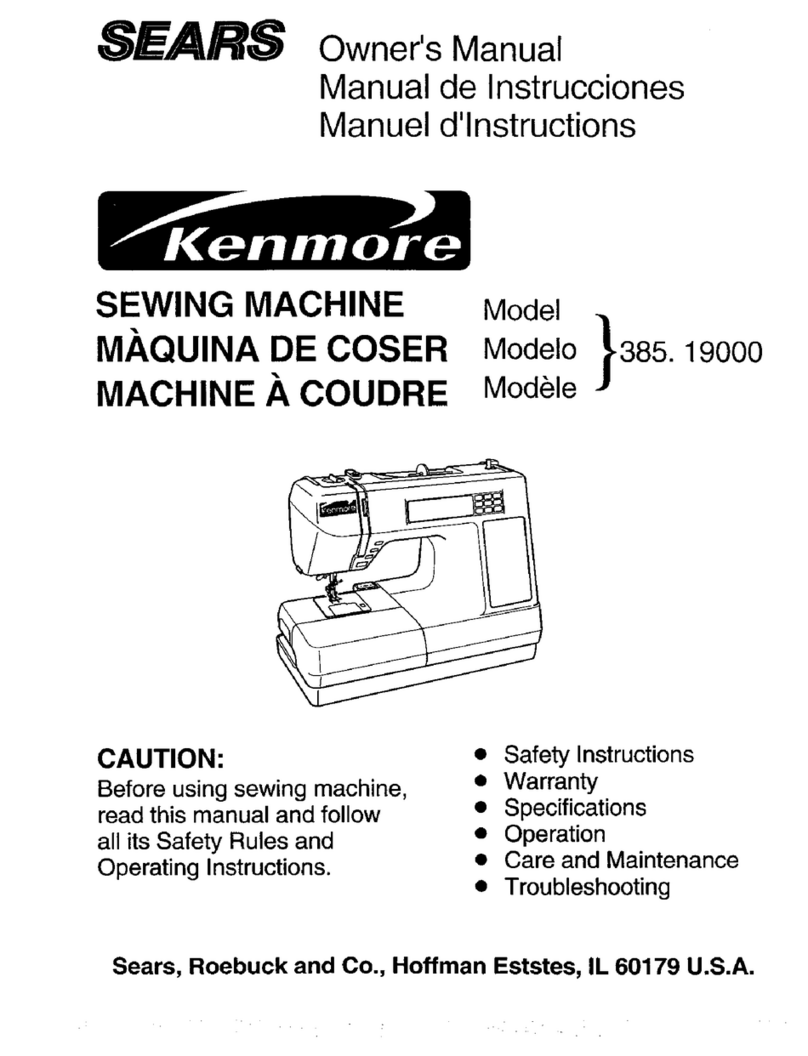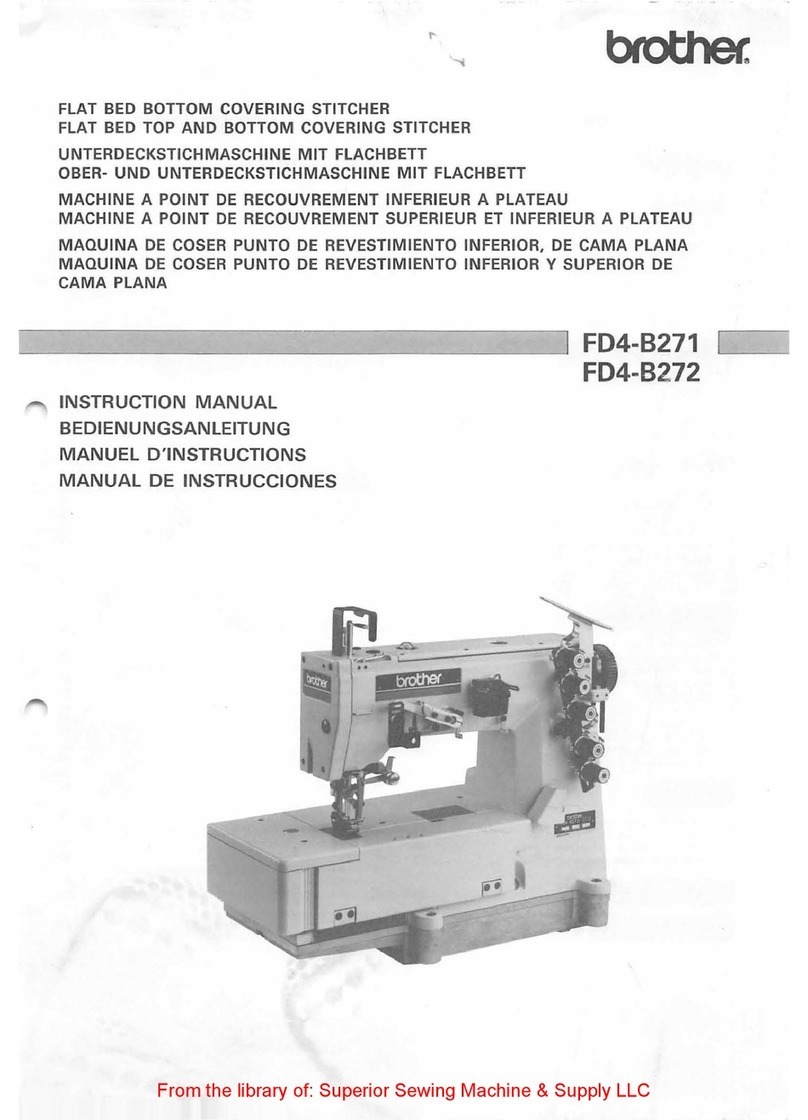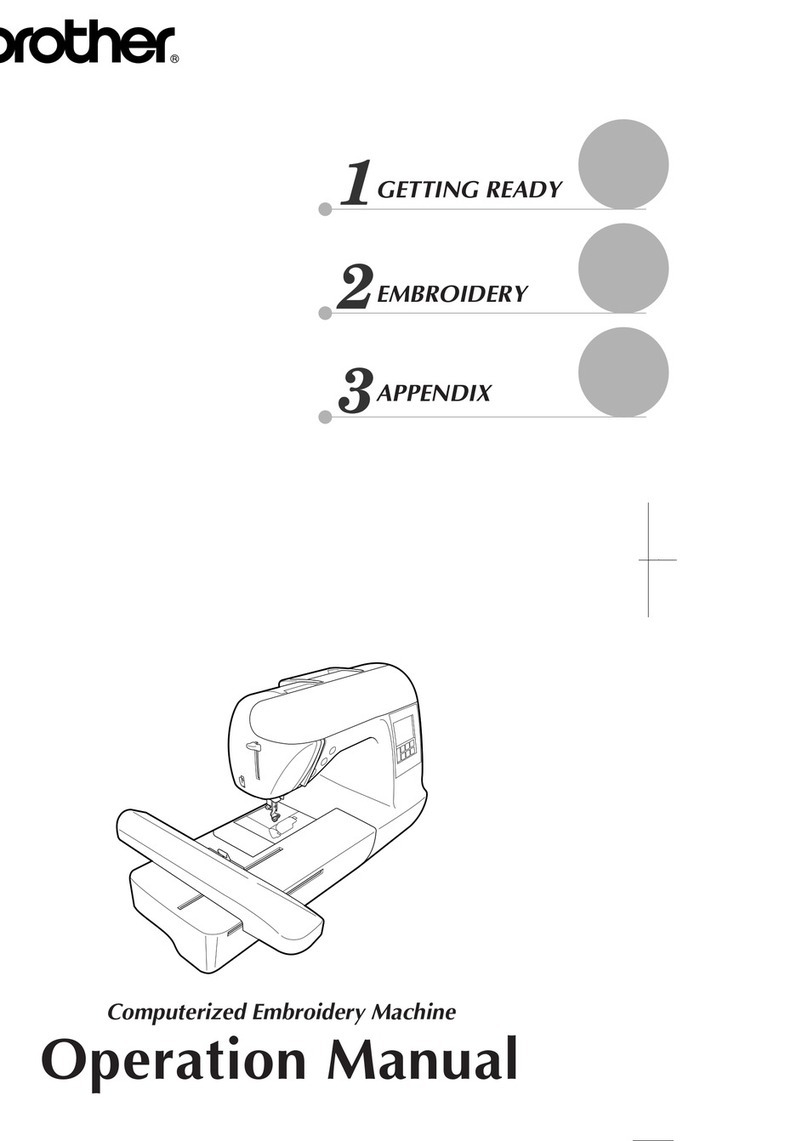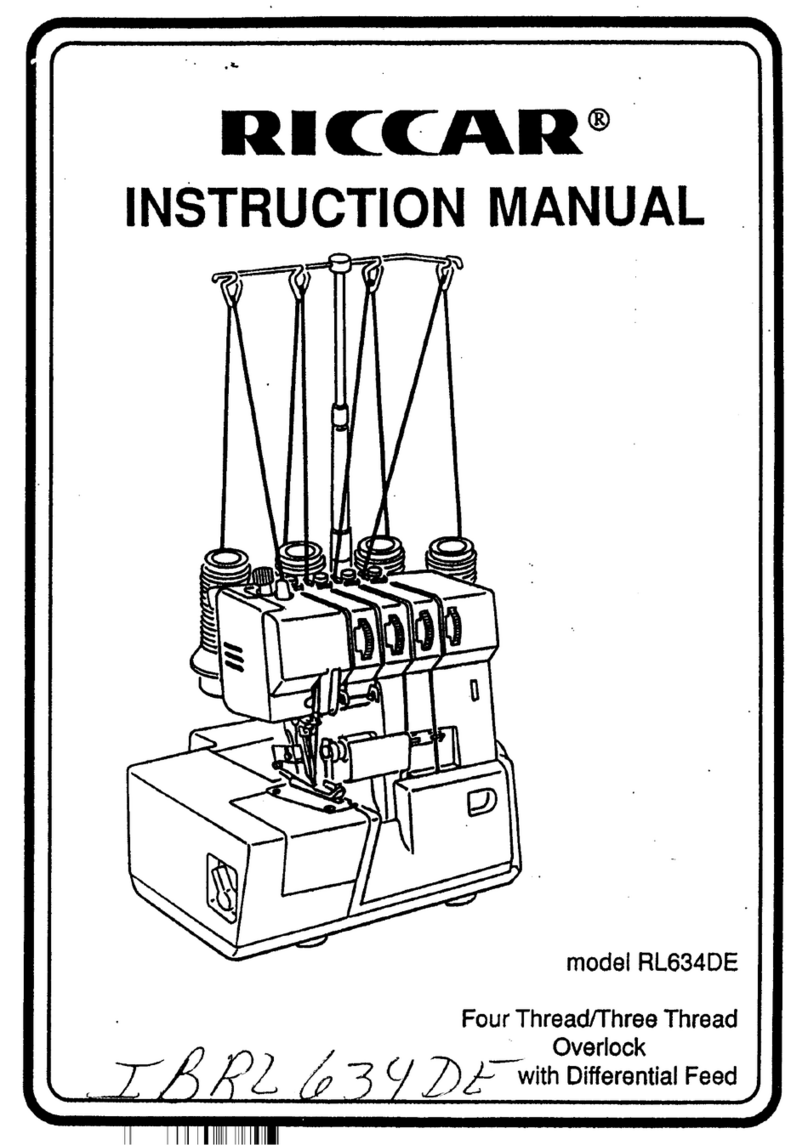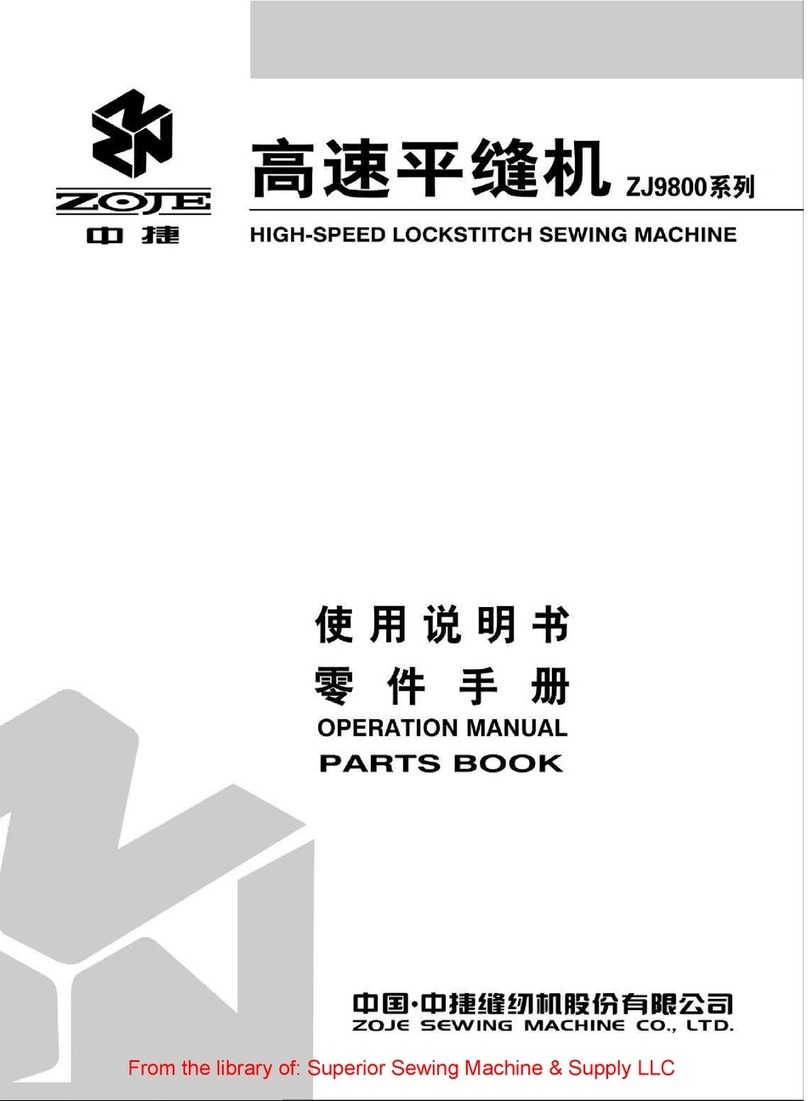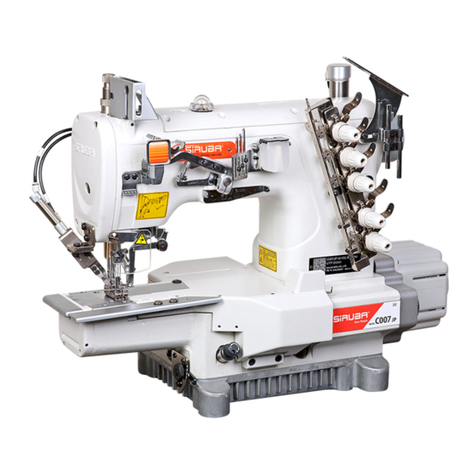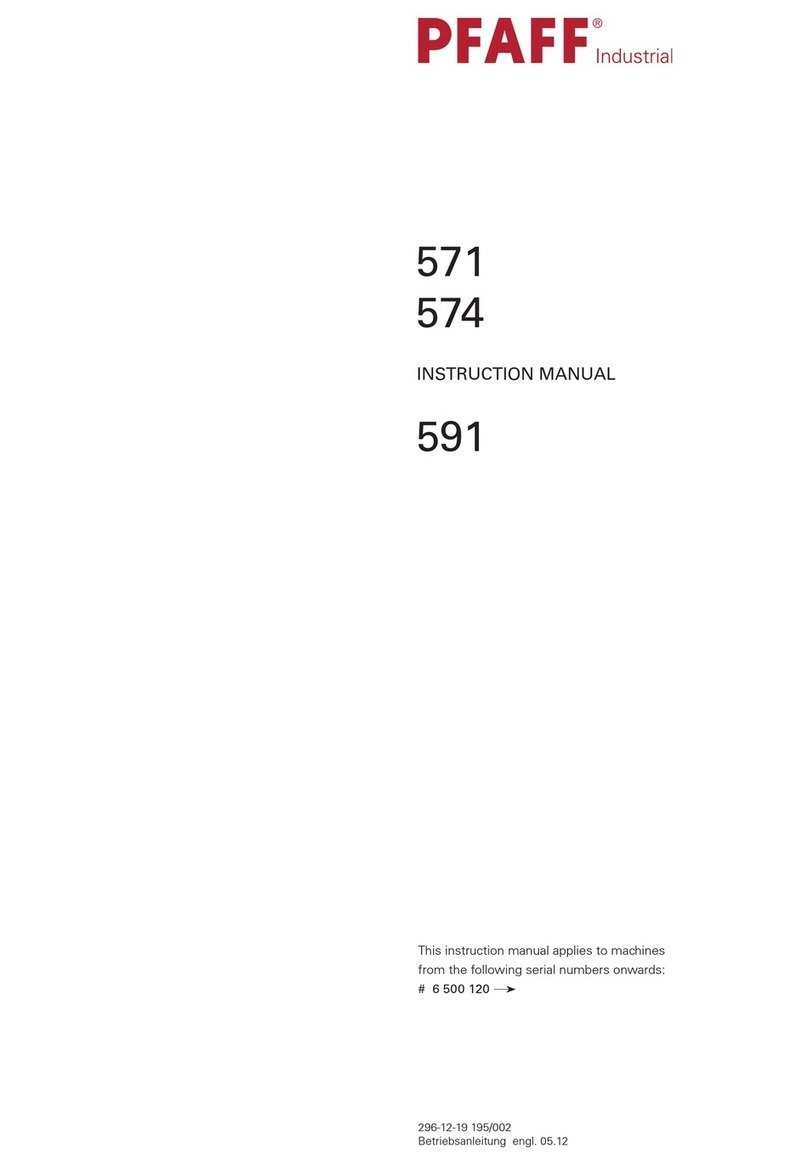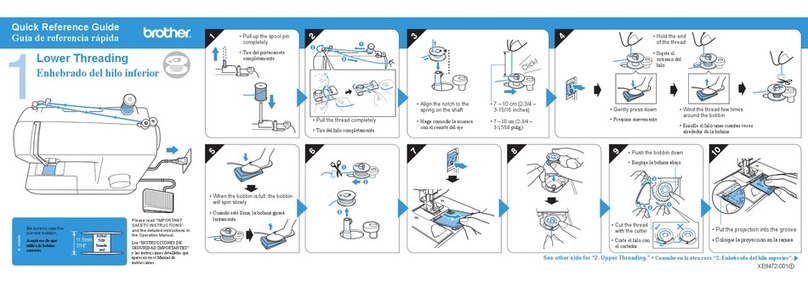r"
I
I
t
I
I:
i
ibe
10
Tensions
tr'or ordinary stitching the
locked in the centre of the upper and under
thickness of the threads should
material, thus:
Frc. t2. ppRrpcr Srrrcu
If the tension on the upper thread
the under thread is too toore ihe thread
upper surface of the material, thus:
If the tension on the under thread is
tne upper thread is too l;*q-;#,h*r;
the under side of the material, thus:
is too tight, or if that on
will lie straight along the
too tight or if that on
will lie straight along
Frc. 18. Tlcnr Upppn TpNsrou
Flc. 14. Loosp Upppn Teusror.r
To Regulate the Tensions
The upper tension is released and inoperative when the presser
bar is raised, and restored when it is let down; having lowered the
presser bar lifter, turn the sma, thumb nut (see Fig. 10) in
["il;f,Jfrfffi:[Sffio.,* to the right to increase the tension,
The tension on the under thread is regulated by the large
- scre\4/ which is nearest the back in the nonni" ou** tension spring;
using the small screw driver turn over toward you to increase
the tension or from you to diminish it.
when the lower tension has been once properly adjusted it is
seldom necess ary to c-hange it, as a correct stitch Lan usually be
obtained by varying the ,ipp., tension.
L1
To Set the Needle
Turn the lrttllrncc wheel over toward you until the needle bar
moves up, to its highest point; loosen the screw in the needle
c!}P-and put the neeclle ',up into the clamp as far as it will go,
with the flat side of its shank toward the rigt i, hr.n screw fast.
To Alter the Length of Stitch
On the front of the arm near the bobbin winder is a large
thumb screw; turn it over to the right to make the stitch longer,
or to the left to make it shorter.
To Turn a Corner
Stop the machine with the needle at its Iowest point. Raise
the pres.ser foot and turn the work as desired, using the needle as
a pivot.
'To change the Pressure on Material
For ordinary family sewing it is seldom necess ary to change
the pressure on the material. If sewing fine silk or flimsy material,
Iighten the pressure by giving the thumb screw on the top of the
head of the rrl&t:hine two or three turns to the leit. To increase
the pressure turn it to the right. The pressure should be only
heavy enough to prevent the material from rising with the needle
and to enable the I'eed to move the work along Jvenly; ; fr.-vier
pressure would mitkc the machine run hard urd b. of no benefit.
To Sew Flannel or Bias Seams
Use a short, st,ifch and as-light a tension as possible so as
to leave the t,ltrt':ul loose enough to stand the *t*ai1 oi-tt u
stretching of the gootls.
A Stitch to Ravel Easily
can be had if tle'sit'ctl, ll., making the upper tension so light thatthe
under thread will nol r lr'rrw into the gobO. but lie straight, as sliown
in Fig. 74.


